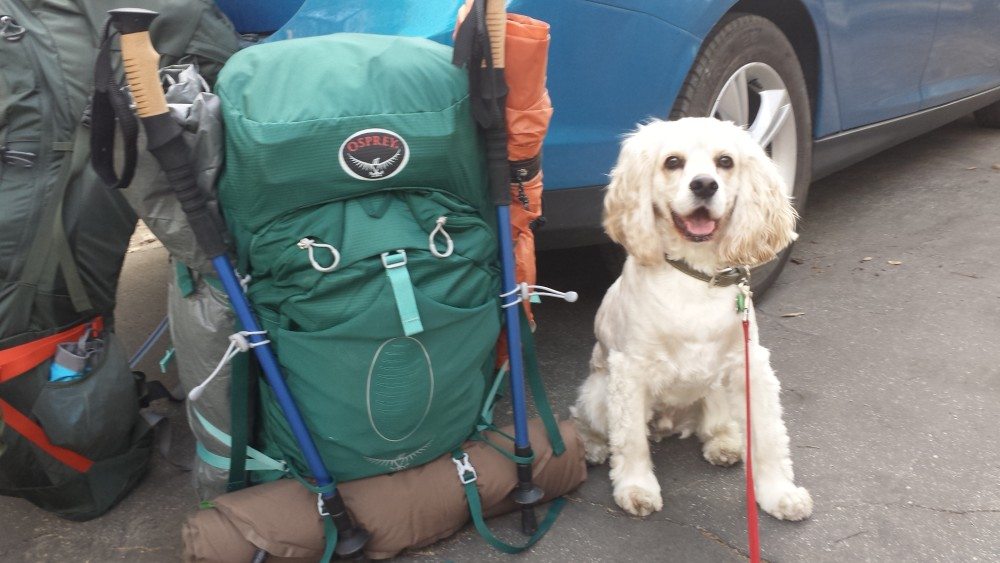It’s exciting to get out on a backpacking trip but don’t let your haste keep you from properly packing your backpack. Knowing how to properly pack your backpack will mean the difference between a pleasant hike and a back injury. Too many people toss their gear and clothes into their backpacks and hit the trail. That may be exciting in its impulsiveness but trust me you’ll regret it.
Remember, you’re going to walk at least a few miles per day with this monstrosity on your back so if it’s not packed right, you could end up being pulled from the top, or worse, dealing with water bottles bouncing around and pulling you in all the wrong places while you’re hiking.
As with everything in the backcountry, doing it well requires preparation so start out with your checklist and layout everything you’re going to be carrying with you before you start stuffing your sack.
Distribution of weight
Start out by mentally dividing your pack into four areas – sleeping, main storage, random essentials and strapped to the pack. Fortunately just about every backpack on the market these days does this for you but it still helps to “think modular” as you’re getting ready to pack your pack.
If you’re like me, you have the random essentials already packed where you want them. Whenever I grab my backpack, I already know that my compass, emergency kit, first aid kit, water filter, etc are already where I want them to be. It’s usually the big stuff that you’ll need to plan out. So let’s start from the bottom up.
Sleeping Gear
Before internal framed backpacks became popular, there was no “compartment” for your sleeping gear. It’s always been attached at the bottom but now there’s usually a smaller compartment at the bottom of your bag that most recognize as your sleeping bag compartment. Ideally you’ll have your bag in a compression sack but if you don’t, you’ll probably be able to stuff your bag into the sleeping bag compartment. It’s amazing how well those things can stuff into small compartments.
Main Storage
Your main storage compartment is where the majority of your gear, clothes, food, etc are going to go. This is, obviously, the largest compartment of your backpack and has the most space for your gear. It also might be the most important compartment to pack correctly because it’s where your weight can really mess with your back.
Start by putting the big stuff in. If you’re packing in your food in a bear canister, that’s the first thing that’s going to go in. It’s heavy, it takes up the most space and, most importantly, it has to go with you. If your bear canister isn’t the biggest and heaviest, figure out what is. You want that to end up close to your back and at the bottom of main storage. If you’re carrying water, you want to keep this down low, too. Once your heavier, bulkier items are packed, start putting as much around them as possible. Roll or wrap your clothes so that they’ll fit in the open spaces and then start packing things where they’ll fit – just remember heavy at the bottom, light at the top.
Random Essentials
As I mentioned before, if you’re like me, you probably keep your random essentials (the ones that don’t need to be cleaned and stored out of your pack, anyway) already in your backpack.
If you’re not sure what those essentials are, think of things like camp soap, your compass, knife and trowel, maybe a towel (preferably after it’s been washed), and things like that. This is the gear that’s light enough to not really make a huge difference in weight distribution so you keep it where if makes the most sense for accessibility. When you really need it, your first aid kit isn’t going to do you any favors hidden under a pile of clothes.
Strapped to the Pack
Getting everything you need into a backpack, no matter how big the pack is, just isn’t realistic. We’ve accounted for a lot in the three main compartments but what about your tent? Your trekking poles? Your sleeping pad? These and certain other items are typically best packed ON to your backpack, not necessarily in it. You’re going to have to make your own decisions about what is actually worth strapping on to your backpack but anything that you need to take on your trip that won’t fit inside your backpack has to go on the outside.








